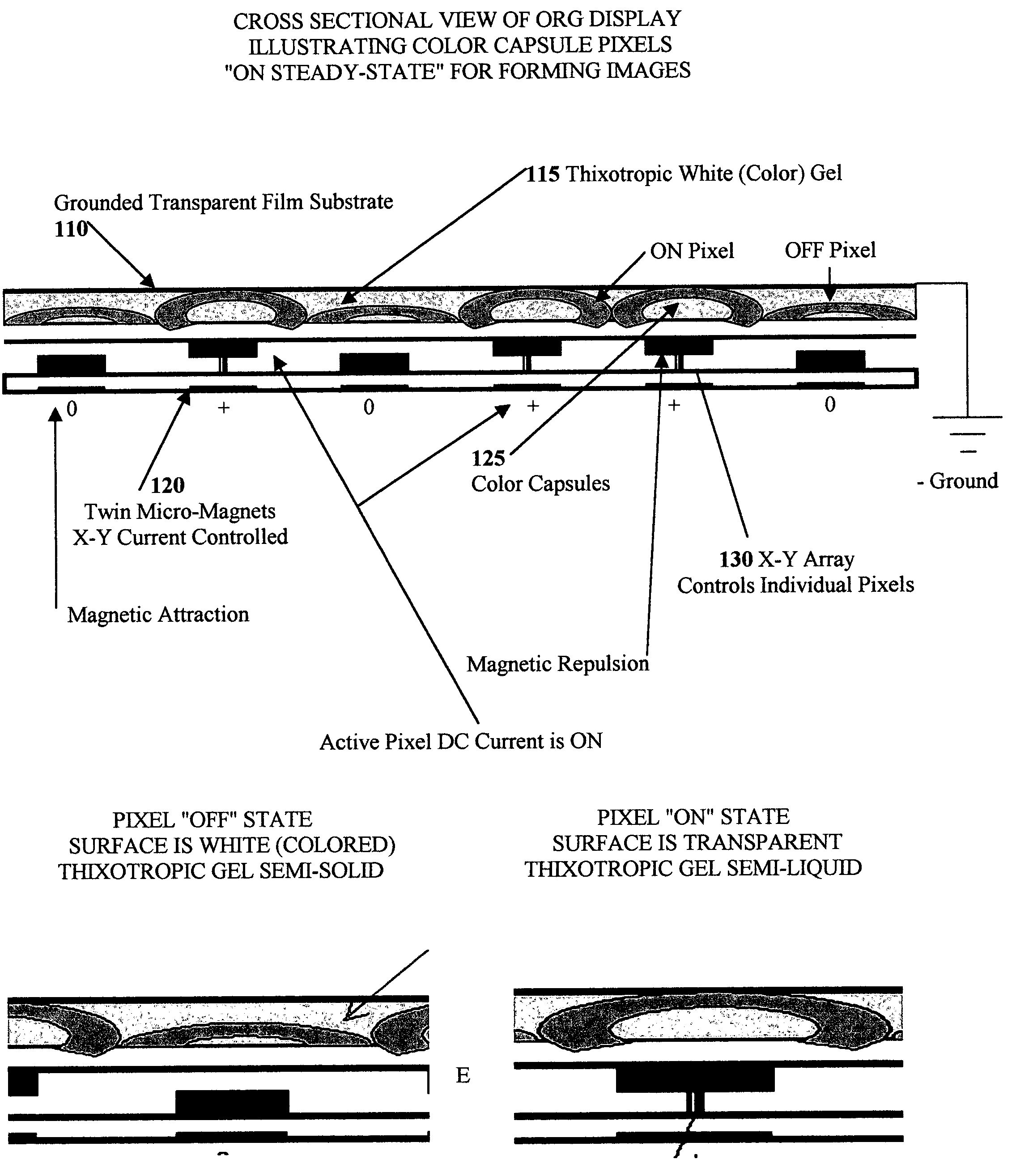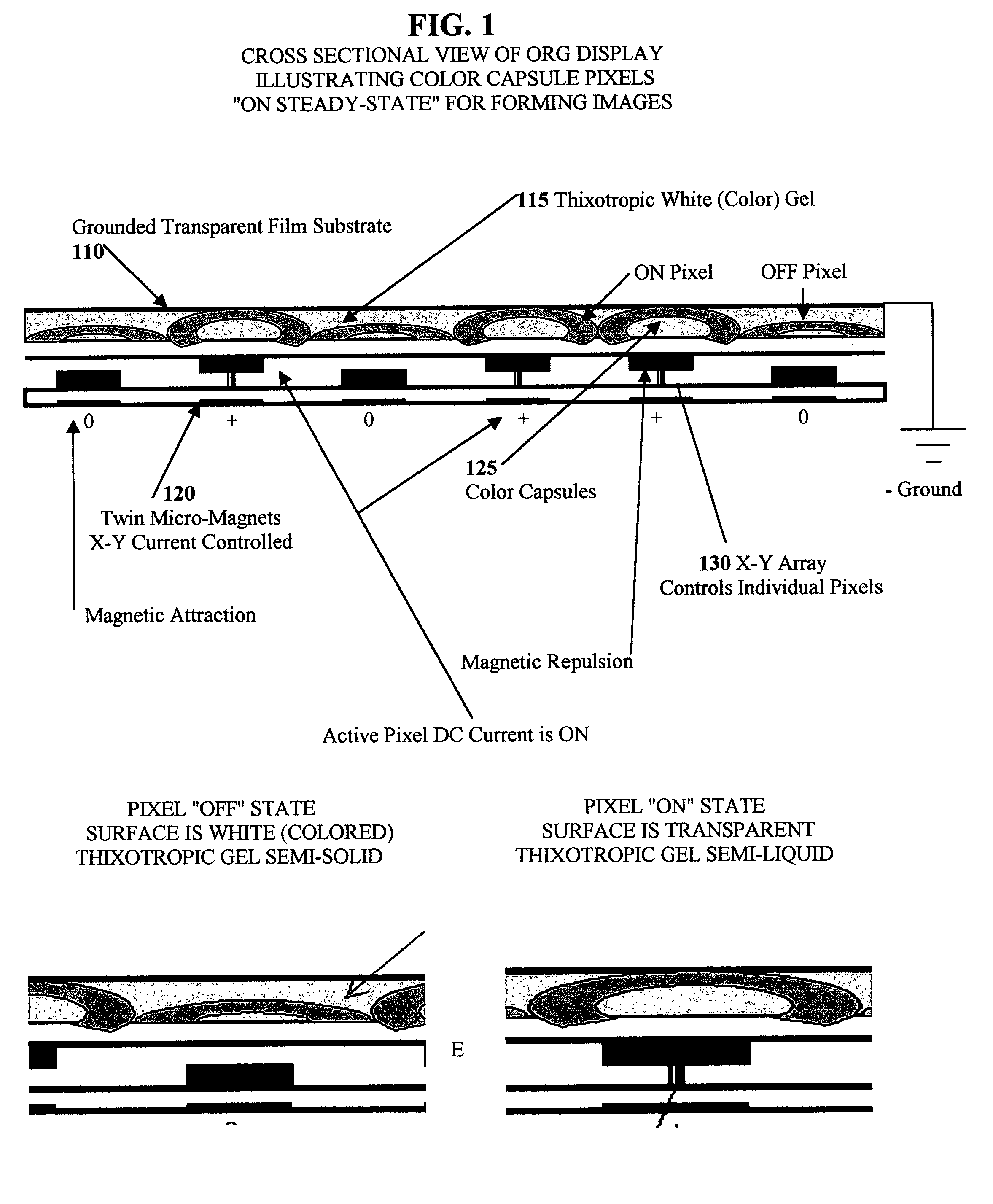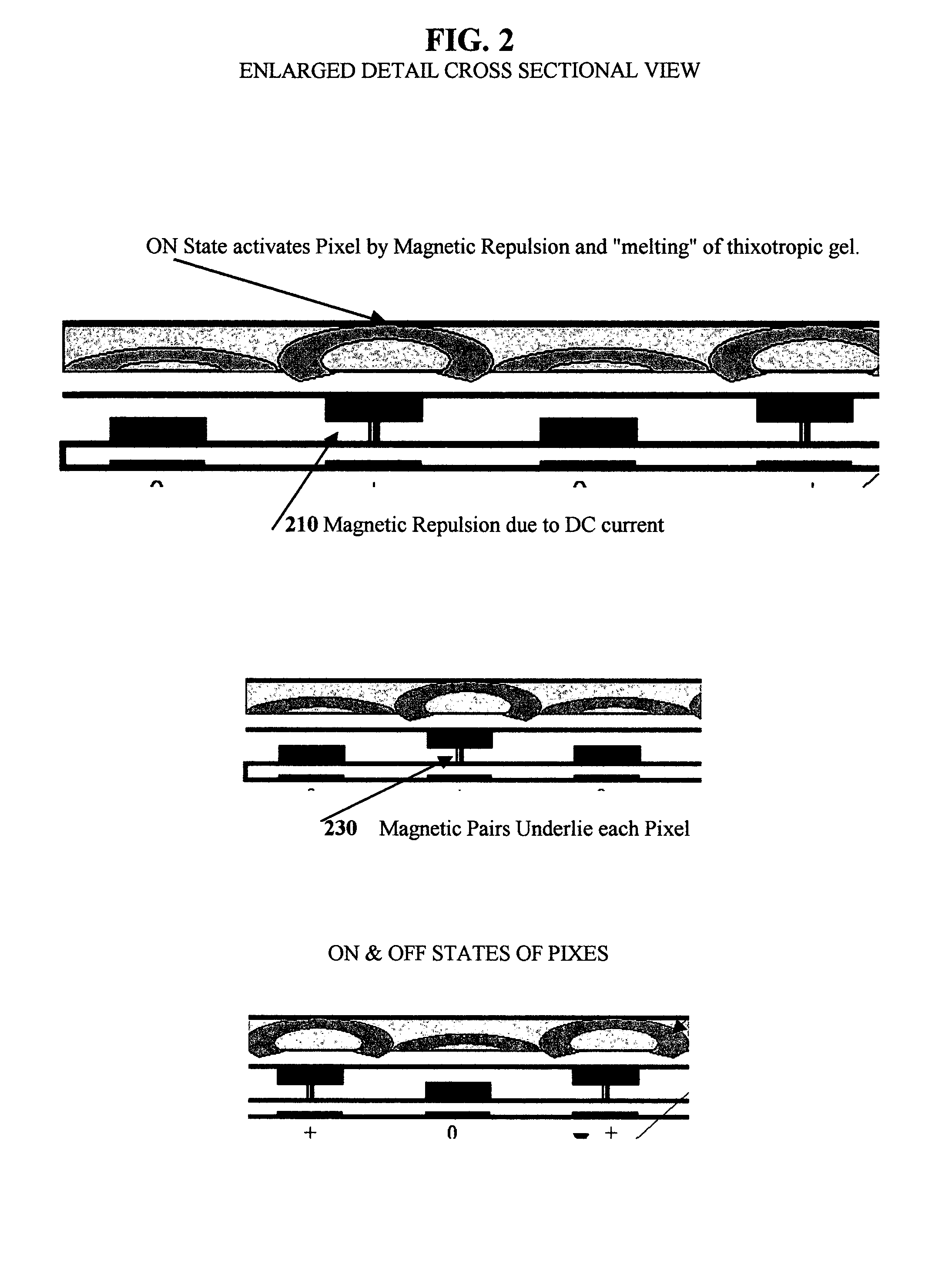Optical resonant gel display
a gel display and optical resonant technology, applied in the field of electronic and wireless low cost paperlike displays, can solve the problems of high cost, lack of significant market adoption of prior art paperlike displays, and difficulty in automating manual labeling, and achieve the effects of reducing cost, cost-effectiveness, and facilitating us
- Summary
- Abstract
- Description
- Claims
- Application Information
AI Technical Summary
Benefits of technology
Problems solved by technology
Method used
Image
Examples
Embodiment Construction
[0047]The preferred embodiment is a flexible composite layered architecture comprising:
[0048](i) a white (or any other suitable color) thixotropic gel coating first surface layer, used in conjunction with an electro-mechanical addressable X-Y pixel array located directly underneath this first layer. Images are formed on the surface of this display by changing the state of transparency of the gel surface, from semi-solid to semi-liquid as a result of thixotropic bond shearing. In addition to the electrical current covalent bond shearing of the gel, images are also formed by each active pixel being forced upwards by magnetic repulsion between the twin-micro-magnet elements to help form images and break the surface tension of the gel and press against the front layer film and forming a visible pixel or; downwards to help erase the image by means of magnetic attraction between the two micro-magnets located directly underneath each pixel.
[0049](ii) a second layer located directly behind ...
PUM
 Login to View More
Login to View More Abstract
Description
Claims
Application Information
 Login to View More
Login to View More - R&D
- Intellectual Property
- Life Sciences
- Materials
- Tech Scout
- Unparalleled Data Quality
- Higher Quality Content
- 60% Fewer Hallucinations
Browse by: Latest US Patents, China's latest patents, Technical Efficacy Thesaurus, Application Domain, Technology Topic, Popular Technical Reports.
© 2025 PatSnap. All rights reserved.Legal|Privacy policy|Modern Slavery Act Transparency Statement|Sitemap|About US| Contact US: help@patsnap.com



